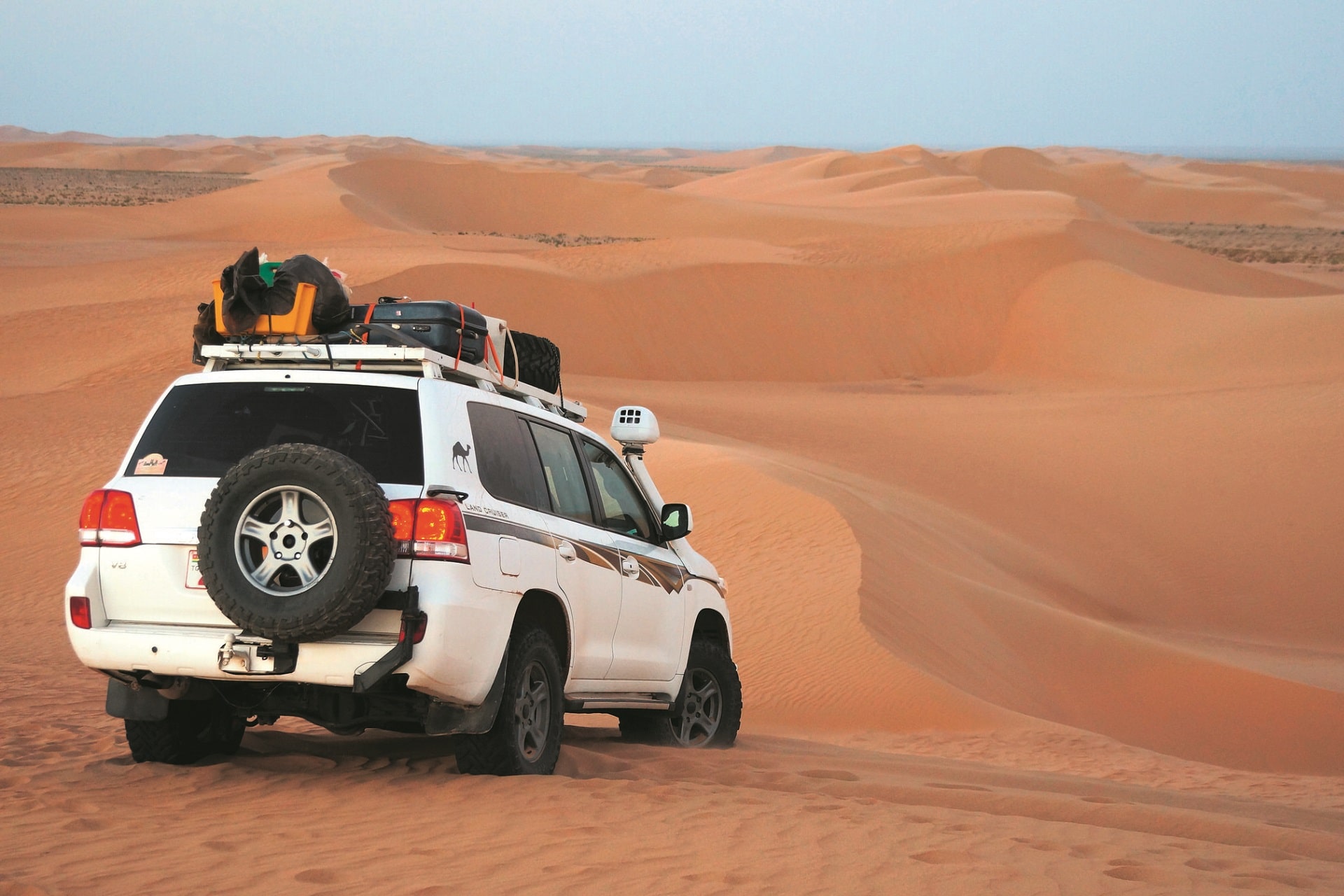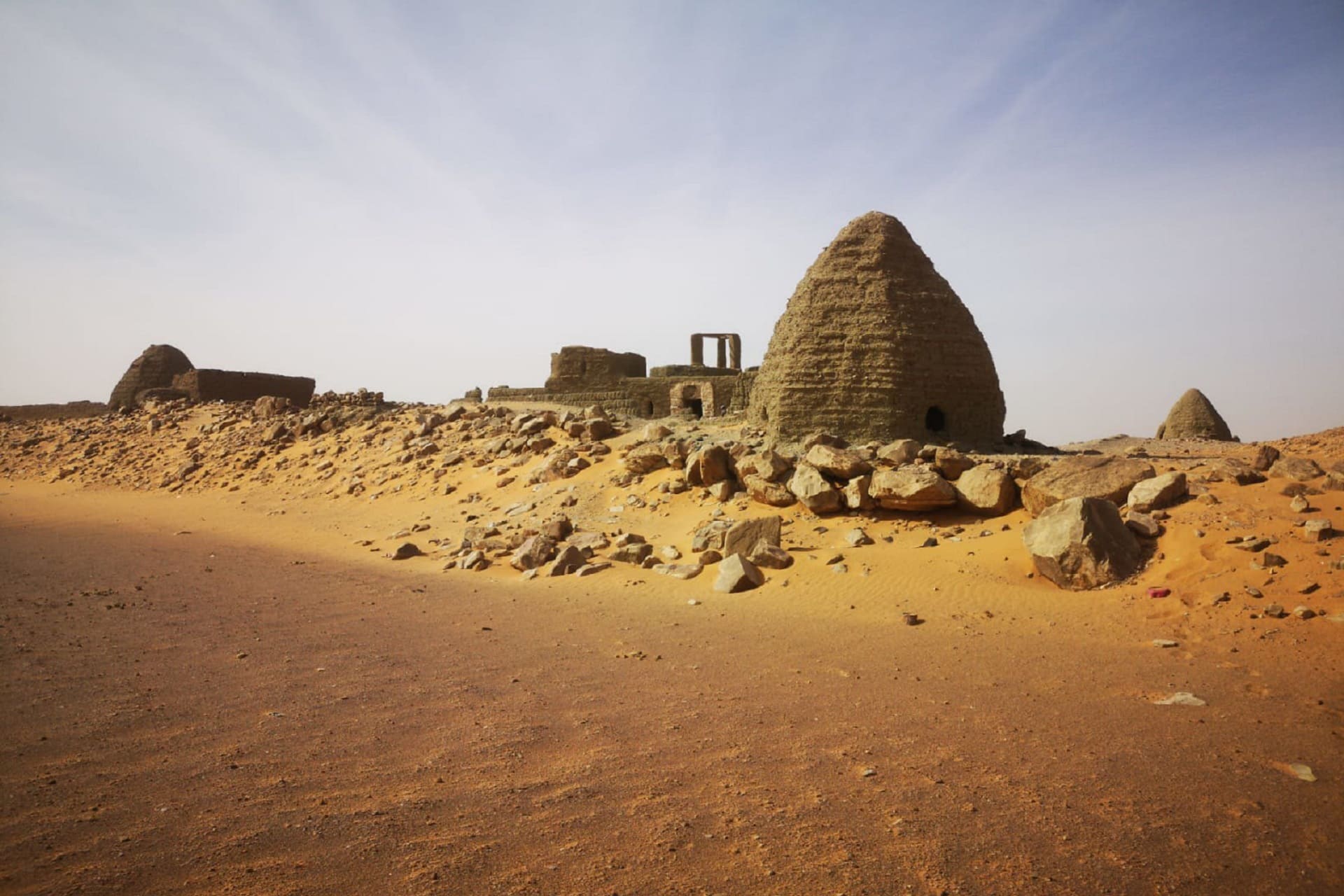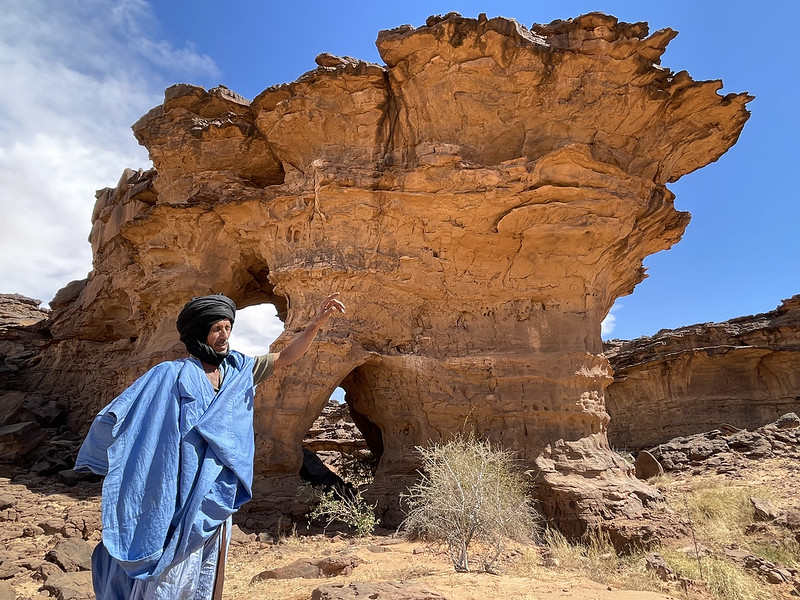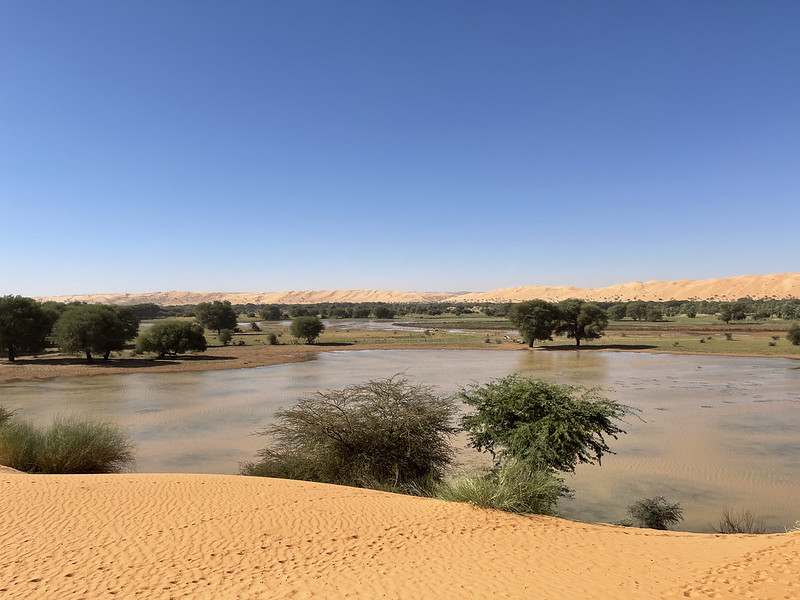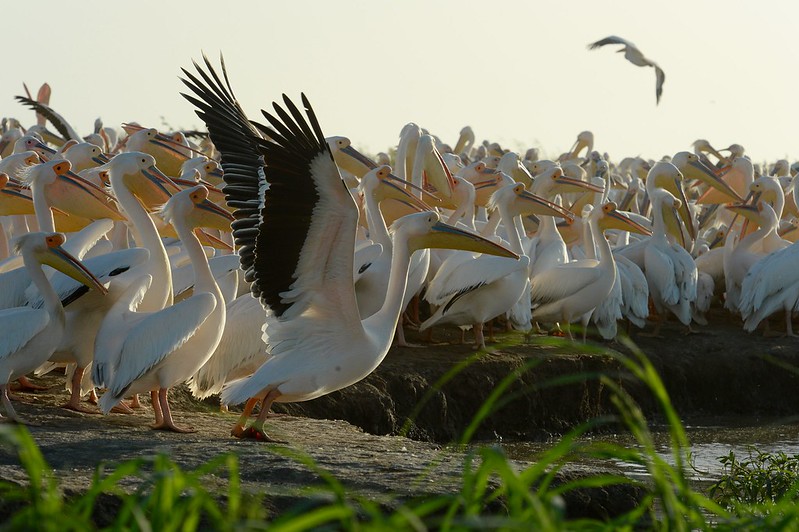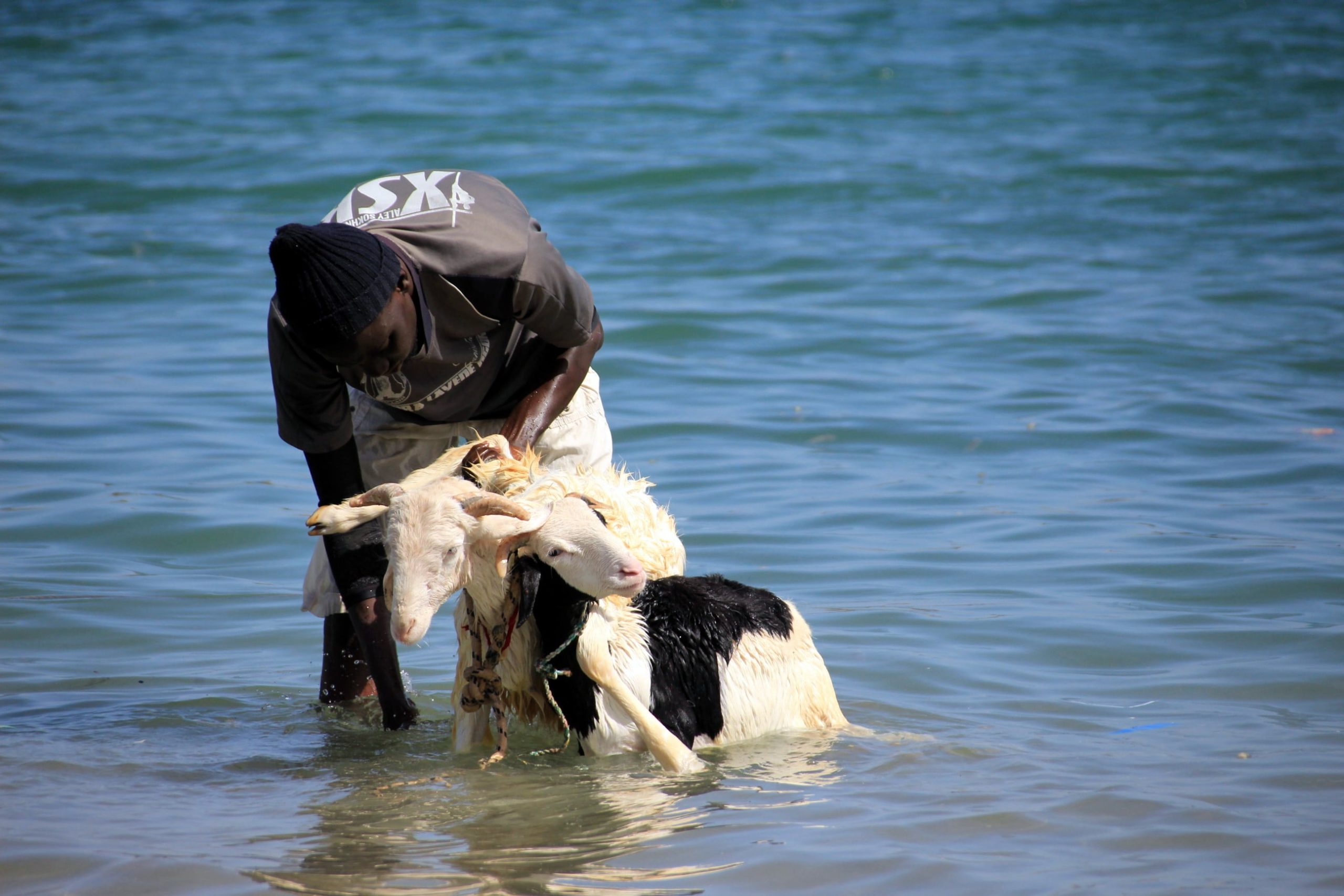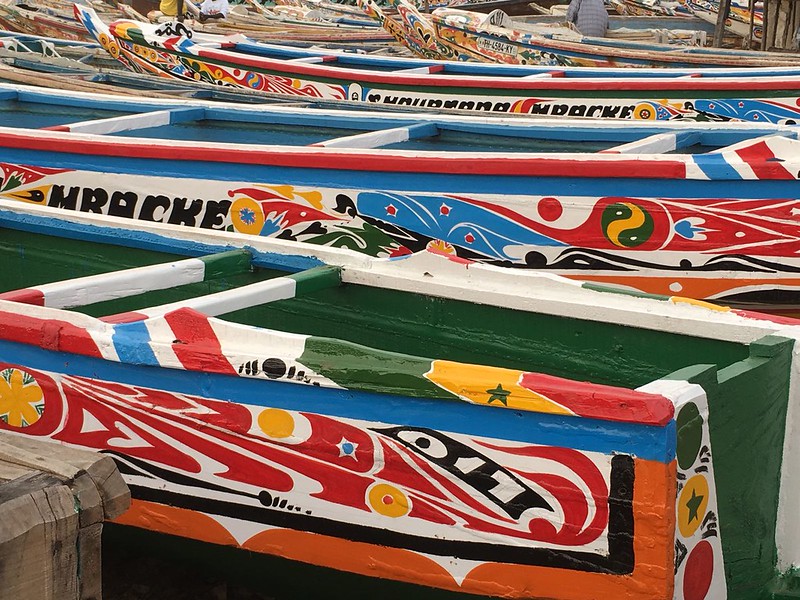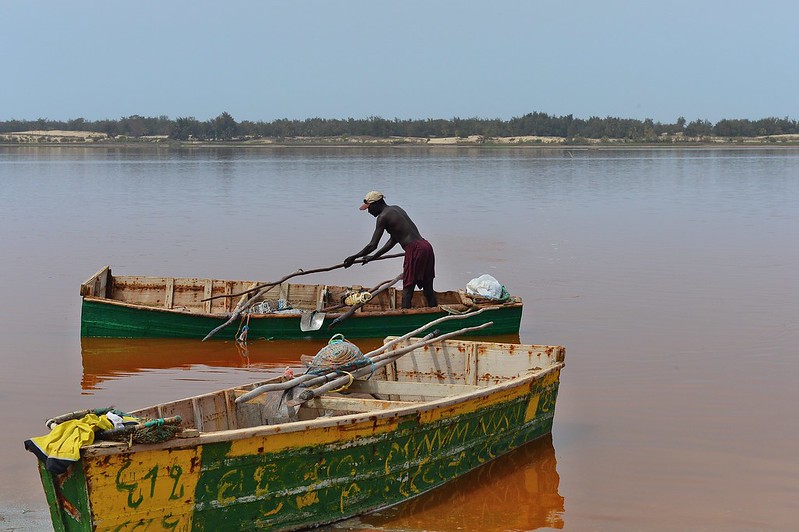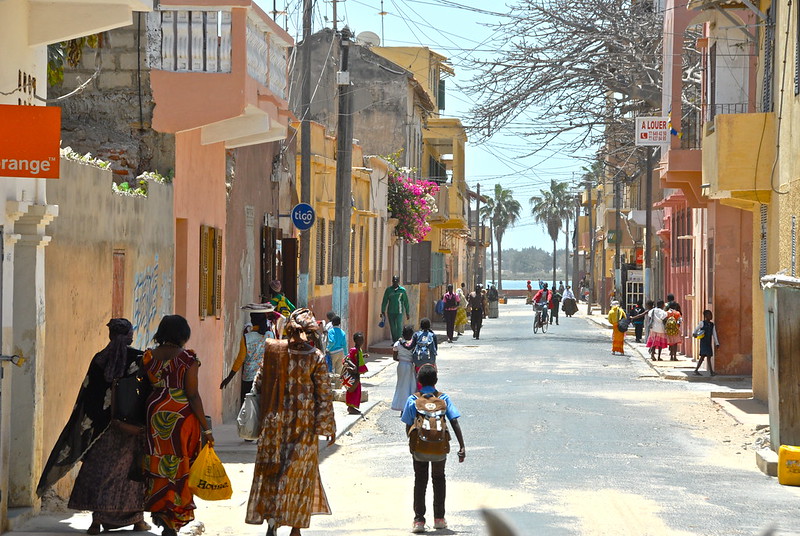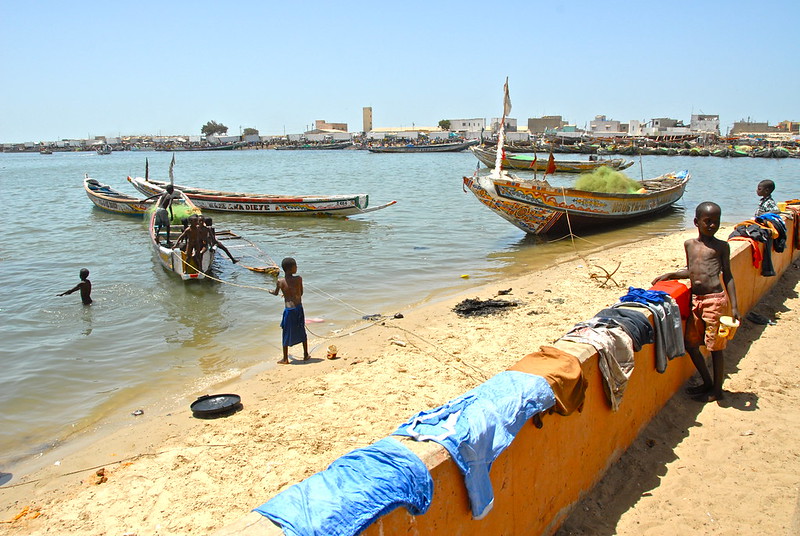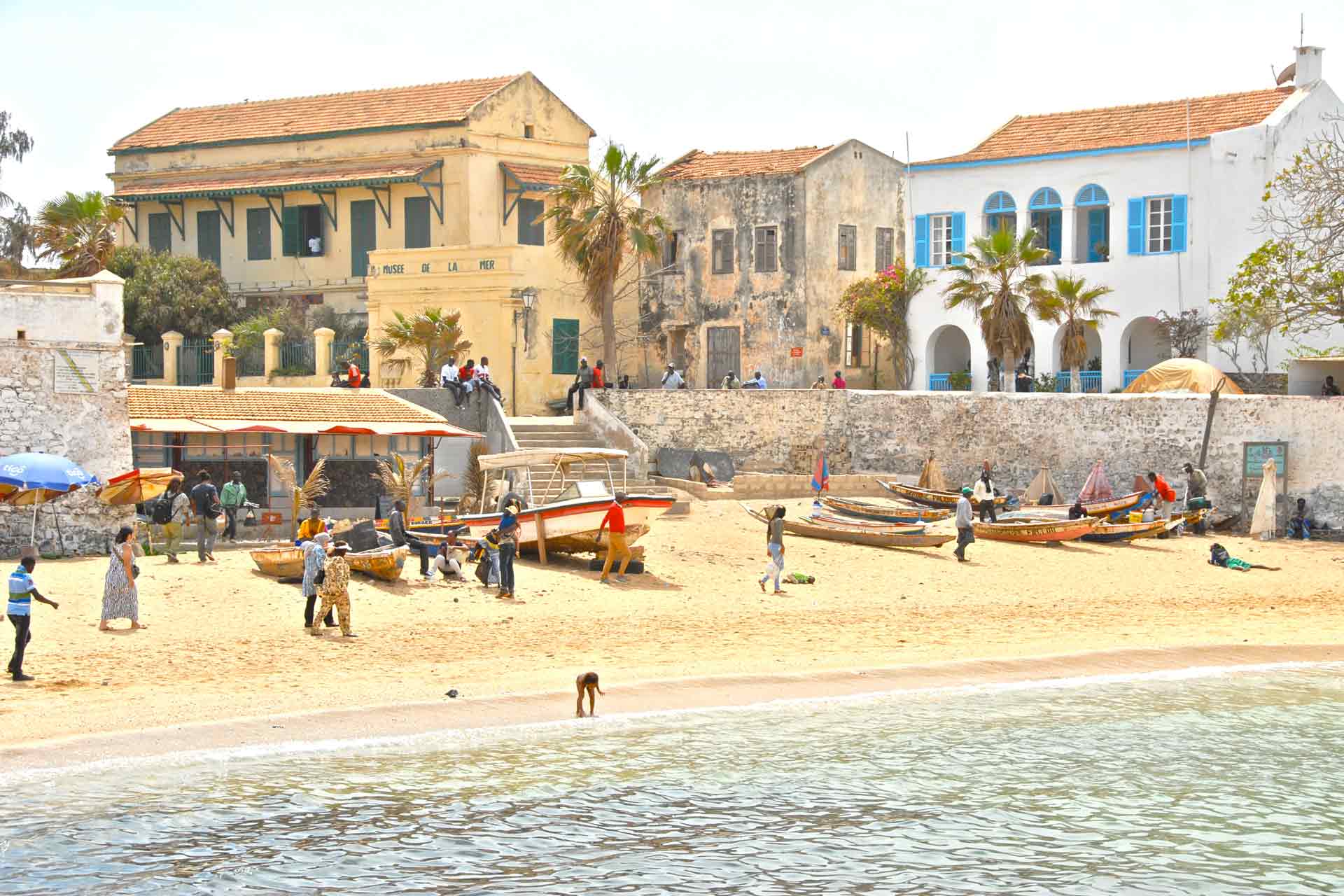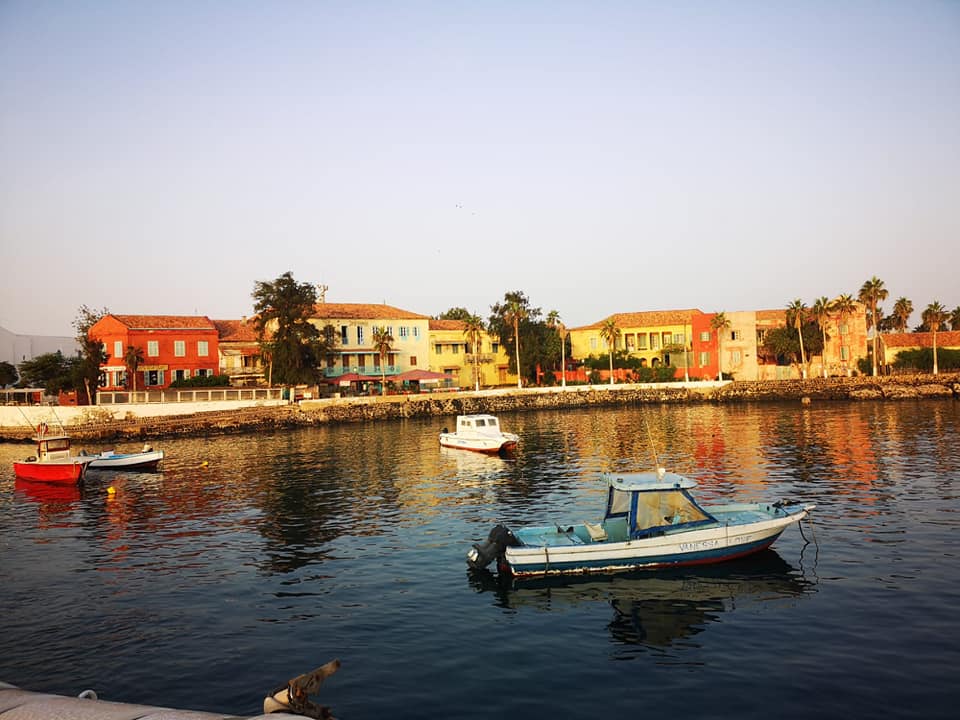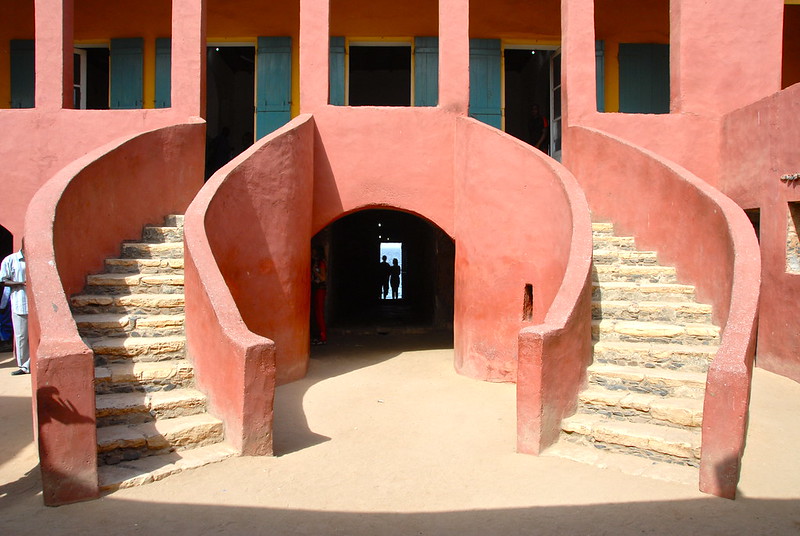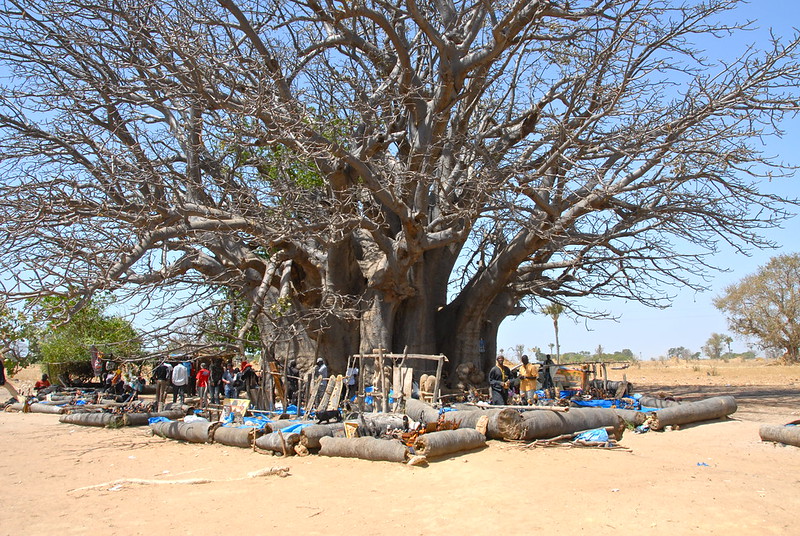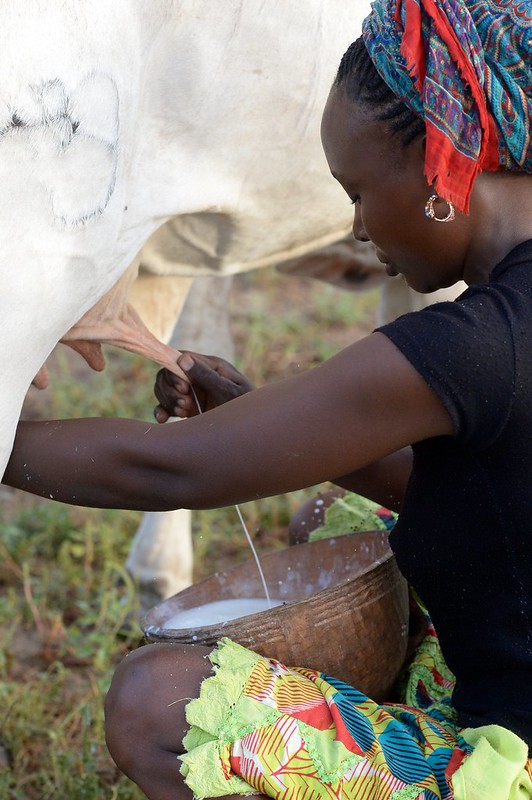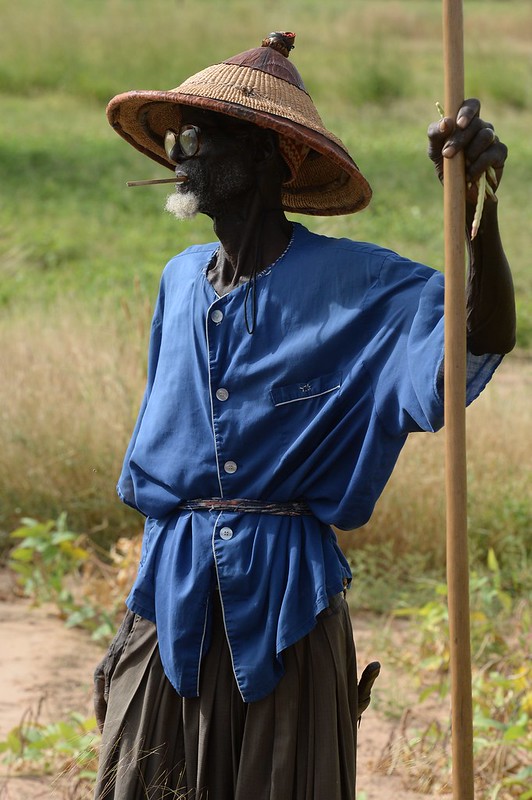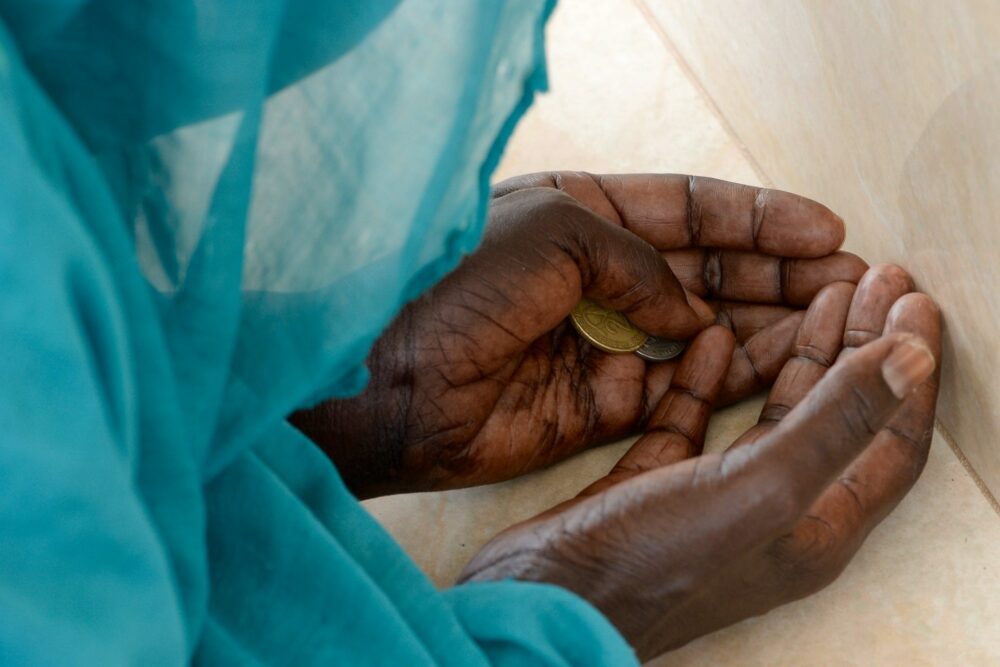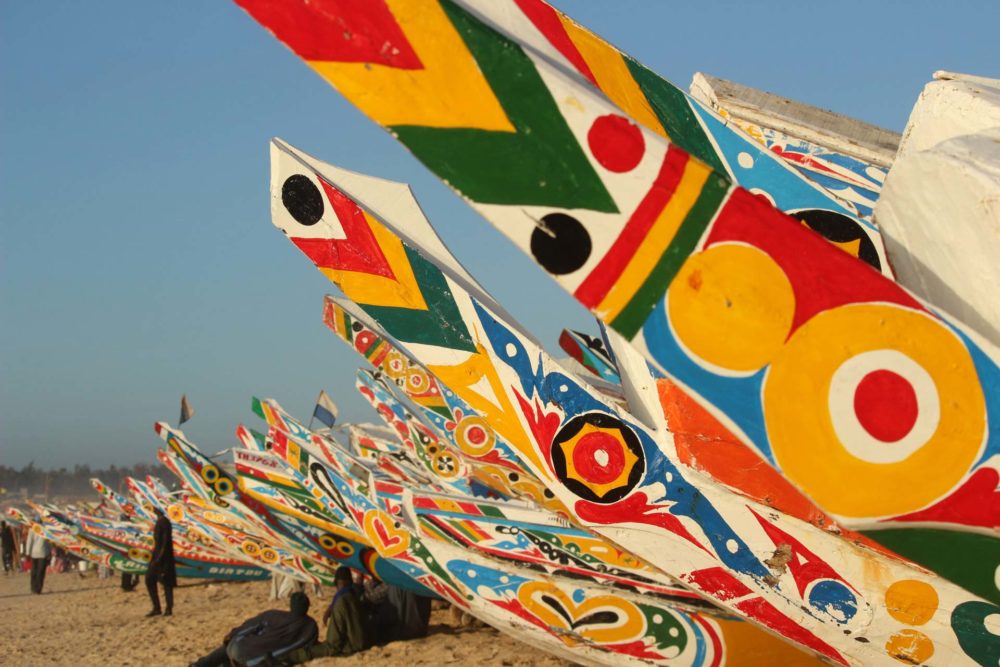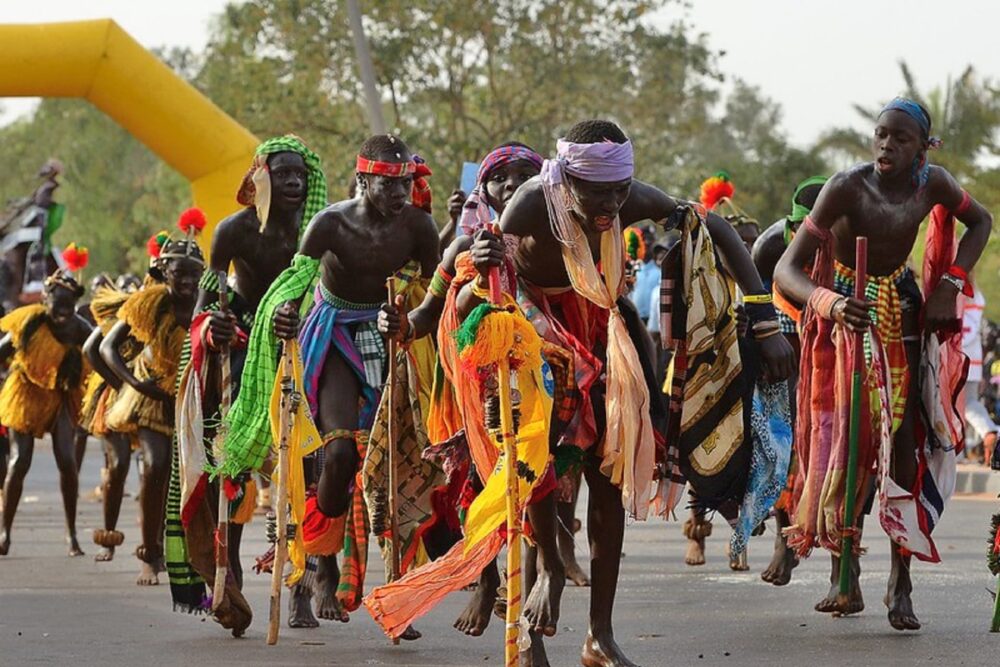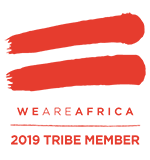Description
MAURITANIA, SENEGAL and GAMBIA
A memorable experience, a balance of adventure and comfort. Out of the beaten track, between culture, live archeology, and anthropology.
– In the day, be an explorer.
-At dinner and night, relax in comfortable hotels or typical rest points.
Cross three countries from “north to south” in a continuous change of ecosystems, landscapes and human environments: from the desert to the savanna and from the savanna to the forest.
Starting from the Sahara in Mauritania: meeting veiled nomads and lines of camels, cross ranges of sand dunes to discover remote encampments.
Continuing south on the uncertain border between desert and savanna where herds of Zebu stand out from the horizon. The silhouettes of the Baobabs will appear in the distance shading clay huts and conical grass roofs. Rhythm of drums, colorful costumes of women carrying calabash on their heads, smiles and eyes from a multitude of children will confirm that we have arrived in Sub-Saharan Africa where we will leave or 4×4 vehicles to navigate in Djoudj National Park one of the largest bird sanctuaries in the continent, in a unique wetland between desert and dry savannah.
Dakar is the vibrant capital of Senegal, an African artistic and intellectual crossway.
At the harbor, we will board a Ferry to Gorée, the ancient slave island.
South again, on a remote track in the high grass to discover a rarely visited site with thousand years old mysterious circles of erected stones, the remains of the largest monolithic civilization on earth.
The vegetation will become more intense, and the first big trees that herald the forest will appear.
We cross the large estuary of the Gambia River on an African ferry with its colorful and friendly crowd. Our soft expedition will end with a navigation, with a local guide, to explore the large labyrinth of water and luxuriant vegetation of a large mangrove forest.
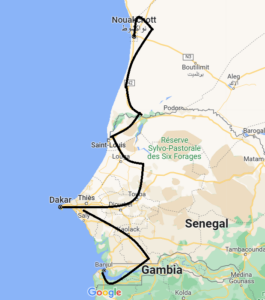
DAY 1: NOUAKCHOTT – Mauritania
Arrival in Nouakchott and transfer to the hotel.
DAY 2: SAHARA – Mauritania
The first visit will be the busy camel market lively introduction to the desert. Leaving the main road for a totally “out of any track” itinerary our driver will deflate tire pressure to be able to navigate on the virgin sand, crossing high ranges of dunes.
Thanks to their long experience, our local drivers and our guide will find the perfect site to camp.
DAY 3: NOMADS AND CAMELS – Mauritania
Our Morish leader, of desert tribal ancestry, will be the perfect guide, able to find genuine nomadic encampments and the right person to introduce us to the elders. Thanks to him, we will be accepted in the large tents with men, women, and children who will share with us their ancestral way of life, their hospitality, and the typical “tea ceremony” that celebrates every encounter in the Sahara.
Outside, herds of camels.
After lunch, we will cross the dunes that separate us from the Atlantic coast to join the fish market. Our eyes, accustomed to sand, will be mirrored in tumultuous waters where wind, waves, brightly painted pirogues, and sub-Saharan (mostly Senegalese) fishermen selling their abundant catch. Mauritania processes more than 1,800,000 tons of fish each year. From the fishing harbour, we will join the capital and the busy central market with thousands of traders and buyers from all Mauritanian regions and neighbouring countries.
Retour along the coast to our comfortable hotel.
DAY 4: ORNITOLOGICAL SANCTUARY – Mauritania – Senegal
Early morning departure in the direction south to Senegal. The natural border between Mauritania and Senegal is the Senegal River also a natural boundary between desert and savannah. We will cross the river on a mobile bridge and move into a unique wetland between the Sahara and the Sahel in the Ferlo desert.
The Djoudj National Park declared a World Heritage Site, is a green oasis formed by hundreds of miles of partially flooded lands. This “humid paradise” is the best habitat and nesting site for over a million migratory and sedentary birds.
Totally surrounded by an arid landscape the protected wetland habitat attracts more than 400 species that live temporarily in this unique bird sanctuary. We will enjoy a boat excursion to visit an island with an astonishing concentration of pelicans.
Arrival in the evening to Saint Louis at the “Hotel de la Poste”, a historical hotel built in 1850 that was the base of the “Aeropostale” (airmail pioneer operation) pilots, as the writer and aviator Antoine de Saint-Exupery author of “The little prince”. “Aeropostale” was the airmail pioneer operator between Europe, Africa, and South America
The hotel, totally restored, has conserved one of the best “old colonial atmospheres” in town.
DAY 5: SAIT LOUIS– Senegal
Saint Louis, in the site known by locals as the Ndar island, a charming ancient town, was a French territory from 1673 until 1895 and the capital of all French West Africa (AOF) colonies from 1895 until 1902 when the capital was moved to Dakar. From 1920 to 1957, it also served as the capital of the neighboring colony of Mauritania.
Located on two islands between the Senegal River and the ocean at the southern edge of the Sahara, rich in three centuries of history, cultural background, geography, and architecture, Saint-Louis is a “bridge” between the savanna and the desert, the ocean and the river and the inland, and furthermore, between tradition and modernity, Islam and Christianity, Europe and Africa.
Home to a society with a distinctive lifestyle, Saint-Louis has retained its unique identity. “No one comes without falling in love with the city,” proudly says its people who consider Saint-Louis as the birthplace of the Senegalese Teranga, the Wolof word for hospitality.
The best way to visit the narrow lanes of Saint Louis is by calash, just as locals do, and walk in the fisherman’s quarters. Time to stroll in the tiny avenues and enjoy the unique atmosphere of this old town.
Lunch in a local restaurant to enjoy typical Senegalese gastronomy and drive in the direction of the Ferlo Desert to discover the arid region where nomadic Fulani tribes live with large herds of zebu. The Fulani (also called Peul), is the largest nomadic tribe roaming West African Savannahs, occupying the vast area from Senegal to Chad. Their origins are still covered with mystery. They all share a common aristocratic cult for beauty and elegance. In the afternoon, a local guide will join us for a visit to the neighboring villages and shelters. When the herds come back, we might even be invited to witness the milking process.
DAY 6: FROM THE HOLLY TOWN TO THE LARGEST FISHERMAN VILLAGE – Senegal
The rarely visited holy town of Touba is the right place to appreciate the hospitality of an African brotherhood. Touba inhabitants follow Muridism and the town itself is a sort of theocratic “state within the state”, ruled by a Caliph. The founder of the Mouridi brotherhood was a Sufi named Ahmadou Bàmba Mbacke.
Ahmadou Bàmba founded Touba in 1887. The holy site remained a tiny, isolated place in the wilderness until his death and burial at the site of the Great Mosque, 40 years later. The Great Mosque was finally completed in 1963 and since its inauguration, the city has grown at a rapid pace: from under 5,000 inhabitants in 1964, the population was estimated in 2018 between 1.000.000 and 1.500.0000 inhabitants.
The Murids have a large social and economic impact in Senegal: thanks to their peaceful (and African) vision of Islam, Muridism, with other brotherhoods, follows the cult of Marabouts, which has become the bastion that protects Senegal from radical Islam.
During the Grand Magal, the annual pilgrimage, the town is visited by four to five million pilgrims, and after the one to Mecca, this is considered the largest pilgrimage.
Murids welcome any interest in their traditions. Yet since Touba is a holly town, all visitors should accept traditional rules. Therefore, we must apply a considerate dress code: not smoke, not drink alcohol, and not listen to music during the visit. If we follow these rules, we will be welcomed. A Baye Fall, a member of a colorful branch of Muridism, will accompany us during the visit.
Lunch in a local restaurant on the way.
The road will join the ocean to discover the largest and most lively fisherman village in Senegal. More than 4500 wooden painted pirogues come to the shore with the catch of the day… On the beach, the fishermen sell to the local market women.
We will meet the artisans carving large pirogues, the painters decorating them with bright colours, and if we are lucky, the “local saint” for a final blessing before sailing…
Arrival at Lake Retba which has been known as Lac Rose.
DAY 7 : FROM DAKAR MODERN CAPITAL TO GOREE TRADITIONAL ISLAND– Senegal
Dakar, the large and vibrant African metropolis was the cultural and intellectual capital of French West Africa.
We will visit the Musée des Civilisations Noirs (close on Monday). Opened in December 2018, it is the realization of Léopold Sédar Senghor’s vision (the first president of independent Senegal, a poet, and a Nobel Prize). The museum represents the historical and contemporary worldwide cultures, art, and soul of Black people, which he called Negritude.
We will also visit the Cathédrale Notre Dame des Victoires & The Kermel Market. The project to build the Dakar cathedral was initiated in 1910 to pay tribute to African combatants, the Cathedral was finally built in Neo-Sudanese style, a style inspired by the Sahara and Sub-Sahara adobe mosque architecture, and was consecrated on 2 February 1936. The colorful Kermel market with local items, fish, vegetables, and a section of crafts is a pleasant immersion in the local everyday life. Arrival at Dakar port to board a ferry and spend a night in Gorée, the island where slaves used to be crammed before being shipped to the Americas. Some restored buildings remain to bear witness to those times.
The Portuguese were the first to establish a presence on Gorée in 1450, where they built a small stone chapel. After the decline of the slave trade from Senegal in the 1770s and 1780s, the island became a port for the shipment of peanuts, Arabic gum, ivory, and other trade products. Thanks to the breeze, the many restaurants, shops, and boutiques Gorée has become a pleasant and trendy location. In the late afternoon and evening, when the tourist crowd has gone back to the mainland, we will experience the real feeling of this special island. Dinner in a restaurant facing the ocean.
DAY 8: THE SALT PANS OF KAOLAK – Senegal
We head to Kaolack town, in a region of salt pans. Lunch in a local restaurant. Kaolack, situated on the shores of the Salum Sea, is an important port for exporting peanuts and salt from Senegal and neighbouring countries, and in the centre of the town, there is a large market.
DAY 9: BETWEEN ARCHEOLOGY AND CONTEMPORANEITY – Senegal – Gambia
Early departure heading to the region between the north bank of the Gambia River and Senegal, which has hosted the largest megalithic civilizations on earth. Sine Ngayene is the richest megalithic site in quantity with 1,102 erected stones. We cross the border with The Gambia, a tiny English-speaking country, totally surrounded by Senegal. We will experience a “very local” ferry, crossing the large Gambia River estuary to reach Banjul, the capital of the country, and then, Senegambia, the liveliest quarter. Optional: evening live music in town.
DAY 10 IN THE FLOODED FOREST – Gambia
Morning visit to Banjul, and lunch in a typical restaurant. To end this unique itinerary, in the afternoon, an experience of navigation in a wild mangrove forest: a unique labyrinth of lush vegetation and water. An expert bird watcher will help us to understand this wetland environment, its natural life, and colourful birds…
Drive to the hotel: day-use rooms before the final evening transfer to the airport.
EXTENSION in Gambia: relax at the comfortable 4 stars Hotel, ocean front, tropical beaches, and swimming-pool. Chouse your preferred duration of the extension.


